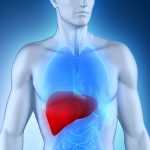
Fizzy, fermented kombucha tea is the hot new health drink. But experts say it’s not clear whether the bacteria-laden beverage lives up to all of its health claims. Proponents say kombucha’s powerful probiotics can help improve digestion, promote your immune response and reduce inflammation in your body by introducing healthy bacteria into your gut. “Kombucha is a living food, and can be highly effective in restoring an individual’s microbiome and an overall feeling of good health,” said Barbara Cole, a nurse practitioner with Penn State Health Medical Group. The drink is a source of live beneficial bacteria and yeasts, organic acids, B vitamins, antioxidants and trace minerals, Cole said. But while kombucha is undeniably a good source of probiotics, it’s yet to be seen whether the drink lives up to all of the hype, said Torey Armul, a registered dietitian nutritionist and spokeswoman for the Academy of Nutrition and Dietetics. “There’s a lot of health claims behind it, most of which I would say are unfounded, not backed by research,” Armul said. “It can do A to Z if you listen to the right people: ‘It can cure every health malady and help with all sorts of things.’ There’s really not enough research to support the vast majority of those claims,” she said. Kombucha is made by adding bacteria, yeast and sugar to brewed tea.… read on >


















